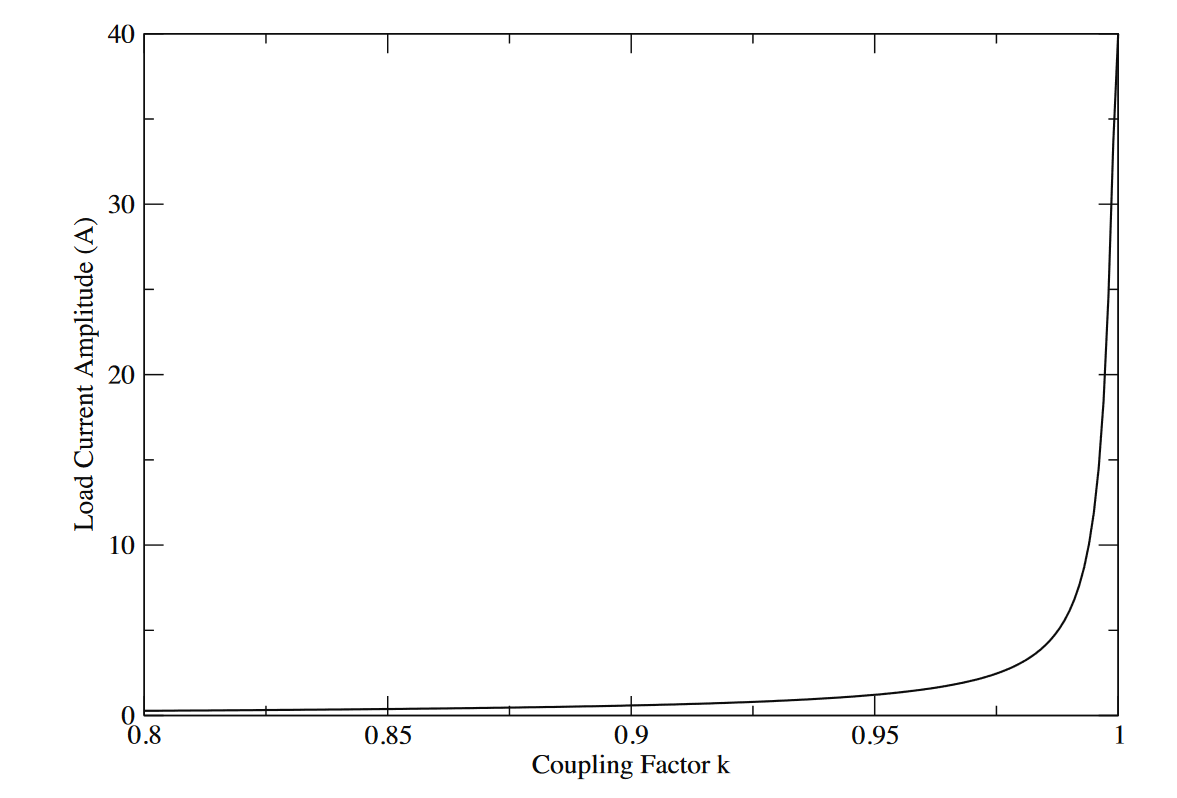For transformers, we define the coupling coefficient with:
where . If then and the coupling between the two inductors is 0. For , then . This is perfect coupling, where all the flux produced by one inductor is linked by the other.
Note that there’s a huge drop-off the further away from 1 you go.1 An implication of this is that if the coupling factor is low, the output current is miserable.

At the time of the transformer’s invention, used to be fairly low, so it wasn’t clear why it was useful. But improvements over the years have sharply increased the efficiency and performance of transformers, hence why they’re so widespread in the power grid, because voltage doesn’t drop. Perfect coupling is impossible, but modern transformers have .
Footnotes
-
From Prof Najm’s lecture notes. ↩